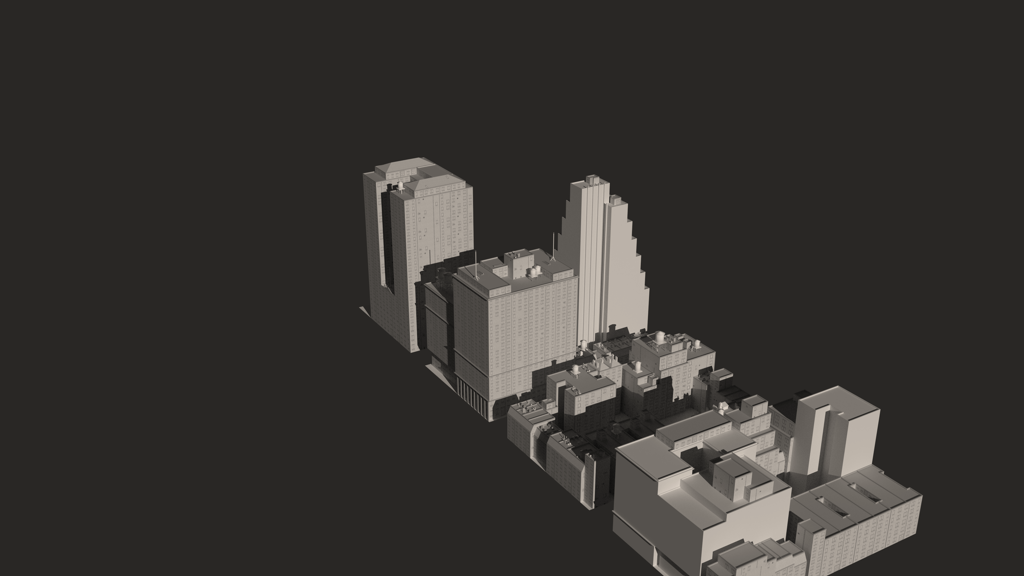What if cities looked like this? The 1920s view of cities of the future was glorious; huge buildings towering into the sky, multi-layer roads, rail and pavements, airships and aircraft, and the bold geometry of art deco.
Sadly this world never came into existence. But what if it had? What would 1950s New York have looked like? I re-imagined this forgotten future based on the view from the Empire State building towards the Grand Central station and the Chrysler building in a world where the 1920s vision of the future came to be.
Software used:
Blender: 3D modeling, texturing, rendering, compositing.
Paint.NET: Final image tweaks.
Inkscape: Texture detailing.Building a forgotten future; 7 days of 3D modelling in 20 seconds:





